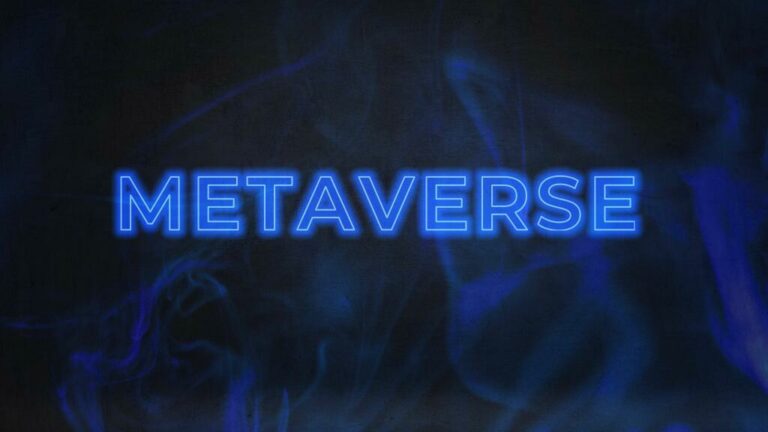Staff Building Course Of: A Step By Step Guide
When organizations can recognize the difference between a team’s pure rising pains and the true points that need addressing, they will better assist the group’s growth. Learning concerning the phases of staff development and aligning team growth strategies to these stages can help when implementing team development. Teams can use these stages to reflect and amend their structure when essential.

Good managers give workers area and autonomy to maneuver via the team building process naturally. However, leaders can nudge staff towards the next levels, as an example, by mediating conflicts or initiating evaluations and feedback classes. The finest leaders assume a coaching role and level groups in the right course instead of spelling out the answers for employees. As a team leader, it’s your goal to help and empower your team to assist get their highest-impact work carried out. When your team members really feel comfortable with each other, it’s easier to collaborate and work collectively.
What’s The Team Constructing Process?
Each stage of staff development does not necessarily take just as a lot time as the one that comes after it, nor the one before it. This is the perfect group improvement stage to learn about how your staff overcomes obstacles and bonds by way of shared experiences. To correctly and clearly establish these in group type, we use the 4 levels of group improvement. Sounds nice in theory, however placing it into apply can really feel daunting. With a structured approach, you’ll find a way to enhance your team’s efficiency at each stage of development.
The group building course of is a step-by-step system for transforming a group of employees into an efficient and collaborative unit. Psychologist Bruce Tuckman was the primary to doc the completely different phases that teams go through as they develop. In this article, we focus on the different phases of group growth and how you can information your team via them to optimize collaboration. Then this 4 stages of team building text is for you, as we discover the psychology of teamwork and share actionable habits that can build extremely effective teams. Your staff needs to speak clearly and, rely on each other somewhat than activate each other. This is an important level in team improvement where leaders can pinpoint bottlenecks, areas of enchancment and couple them with team strengths to construct ahead momentum.
Leaders of a team in the Forming stage have a lot of accountability in serving to the staff come collectively. This stage is the time to create a team structure to stabilize the staff throughout its growth. The structure could give roles to certain people or rule for all members to comply with, but it should present a fundamental define for the way the team will function. The chief should information the members through the method of attending to know one another and should encourage members to reach the team objectives.
- If you have ever been on a group, you’ve probably seen its fair share of ups and downs.
- Alternatively, some staff members might find focussing on the task at hand is an efficient response to their unhappiness or sense of loss.
- If you discover a couple of team members not collaborating, the simplest thing to do is to immediate them for his or her ideas and concepts.
- They may be feeling some nervousness due to uncertainty about their individual function or future responsibilities.
- Members will typically be enthusiastic about their work and find satisfaction in the outcomes.
They might really feel sadness or a way of loss in regards to the changes coming to their team relationships. And on the similar time, group members could really feel a way of deep satisfaction at the accomplishments of the group. Individual members might feel all of these things at the same time, or might cycle through emotions of loss followed by emotions of satisfaction. Given these conflicting emotions, individual and staff morale might rise or fall all through the ending stage. It is highly probably that at any given second individuals on the team will be experiencing different feelings about the group’s ending.
Key Actions To Support Norming
Even as a staff improves in performance, it’s important to keep bettering and fascinating these skillsets within the name of higher cooperation and group development. Self-assessment is an important a half of the group improvement course of and utilizing a structured framework may help guarantee a productive dialog that doesn’t overspill or create additional battle. The learnings from this exercise can then be used to resolve points, strengthen the group and assist move the group from Norming to Performing. Team development is an intentional, ongoing process by an organization to enhance the efficiency and progress of a group working towards a common goal or mission.

As groups work collectively, conflicts in considering, strategy, or working practices can and will arise. At the top of the exercise, all the questions go up on a whiteboard to encourage further dialog throughout the day. By encouraging the group to take ownership of this part of the team improvement process, you probably can meaningfully impression the Forming stage.
The Method To Accomplish Massive Things With Long-term Objectives
Team members are capable of stop or solve problems in the staff’s course of or within the staff’s progress. A “can do” attitude is visible as are presents to help one another. Roles on the staff might have become extra fluid, with members taking on varied roles and responsibilities as needed. Differences among members are appreciated and used to reinforce the group’s efficiency. The forming stage is where co-workers get to know one another and construct the trust which is important for good individual relationships.
Initially, relationships and trust are built from scratch throughout what is called the forming part. This stage is adopted by the emergence of friction and battle throughout the staff, resulting in a turbulent storming phase. Being a group chief is an integral a half of every product manager’s position. Even if managing a staff isn’t explicitly mentioned in your job description, as a product supervisor, you may be an informal chief whose actions significantly affect the team’s performance and morale. Whether you’re constructing a new group or working on a particular project with cross-functional partners, it’s essential to determine your team’s mission early on. Setting a goal, even before you begin working together, establishes some floor guidelines to give consideration to and ensures that everyone is on the same page and transferring towards the identical goal.

Many dysfunctional group behaviors develop at this stage, similar to lack of belief, concern of battle, and absence of accountability. However, I at all times find it encouraging when my team members start conflicting with one another. It’s an essential step that each one groups should undergo as they mature. In its preliminary phases, a new group operates with common effectivity.
Understanding The Psychology Of Group Dynamics
Remove obstacles by coordinating tightly with adjoining and upstream groups. Validate your assumptions about what your clients want, then proactively determine what you’re not doing right now so you don’t get distracted. See how millions of learners in one hundred countries are strengthening important expertise.
Remember that your groups don’t have to be perfect right out of the gate. Team building takes time and apply, however can enhance your team’s dynamics. Team activities alone could not fix teams with incompatible skill levels and dispositions, so higher to select the proper members on your team from the get go. In the earlier phases of your team’s formation, establish a transparent communication plan. A communication plan is an outline of how your staff goes to speak essential info to key stakeholders.

But likelihood is that even in case you have skilled the excessive and low durations of teams, you may not know exactly what they imply or why they occur. Bruce Tuckman defined these four stages of staff improvement as Forming, Storming, Norming, and Performing. As groups transfer on from the storming stage, team members will start to understand each other’s strengths and respect the authority of group leaders. This norming stage entails the agreement of the method to divide required work and what role every staff member is to play in the accomplishment of the team’s objectives.
Navigating The “performing” Stage
Our activities are designed to be enjoyable and interesting and are due to this fact an excellent method of forming relationships while turning into acquainted with each other’s strengths. The fun, strain free surroundings assists with norming and storming and performing by requiring teams to work together and perform in a pressure free environment. It’s important for the staff chief to establish this course and help every group member find their role. The main objective of this exercise is to remind and reflect on what group members or individuals have been by way of and to create a collective expertise and shared story. Every particular person will gain a shared thought of what the group has been by way of together. Use this train on the end of a project or program as a way to reinforce learnings, have fun highlights and create closure.

However, you have to praise the achievements in a well timed method so that staff can feel the total benefits. As you progress through the group constructing course of, you need to periodically measure your team’s progress. At this point, you might resolve to revisit your baseline and assess which teamwork competencies your group mastered, and which could use more work. Feel free to bolster any teamwork abilities you’re feeling your staff may nonetheless improve. To foster accountability in your team, you need to purpose to create a safe surroundings the place employees are not afraid to own up to errors and admit shortcomings.
Effective group building can scale back conflicts, turnover, and absenteeism amongst its members by fostering a positive tradition and bettering total morale. And its success or failure very a lot hinges on the information and talent of its leadership. When leaders permit teams to form and develop with unrealistic expectations or too little oversight, bad things can occur. Conversely, when leaders recognize that every team wants a while and TLC to develop right into a functional unit, good things are most likely to comply with.
Organizations are not groups of individuals working solo, however quite teams collaborating in course of a shared goal. Teams must adopt an “us” mentality to thrive within the trendy office. Otherwise, employees is not going to utilize all of the resources at their disposal. The fifth stage of group growth, also called the mourning stage, is the final stage a team will go through. After a project is over or if a staff is disbanded, staff members who labored together will go right into a small mourning period.
Identifying every of the 4 stages of group development helps you underscore your group’s needs during each. After reading everything above, you’ve a fairly good concept where your group is at – but does the the rest of the team agree? We all understand issues in our personal unique way based mostly on past expertise and what we know now. The key to moving through this stage is to make issues so easy as potential. Hopefully, your team’s objective or desired consequence is understood by this point.